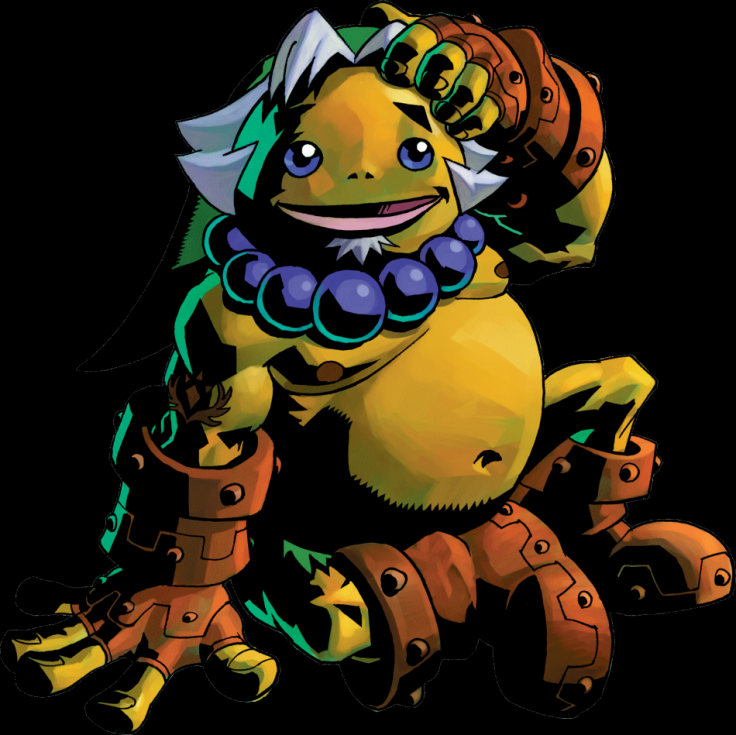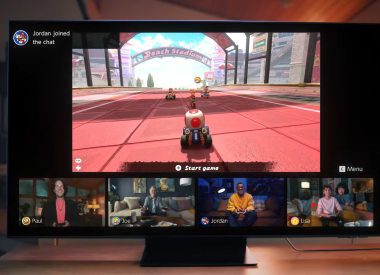Our analysis of the art of Majora's Mask continues. Continued from Part I and Part II.
The Gameplay Undermines the Narrative in The Legend of Zelda: Majora's Mask
Unhappy Masks
The Legend of Zelda: Majora's Mask does, actually, have fantastic gameplay -- once it gets around to letting the player experience it. Thirteen years after release, Majora's Mask maintains a shockingly high 95 on Metacritic. It builds and extends on the groundwork laid in The Legend of Zelda: Ocarina of Time, its immediate predecessor and probably the most significant game of the early 3D era. A direct sequel to one of the best games yet made, using the same engine, is bound to be a very solid gameplay experience. And Majora's Mask is.
But, just as the story undermines the gameplay, so too does that gameplay - excellent though it may be - weaken the narrative Majora's Mask is trying to tell.
One of the biggest disconnects in Majora's Mask results from the three special masks that can transform Link into new forms: the treelike Deku Scrub, the mountainous Goron, and the fishlike Zora. Each one gives Link unique powers, and are a major driver of gameplay innovation in Majora's, one of the few major dissimilarities in gameplay compared to Ocarina.
Narratively, each mask has a strong justification as well. The Skull Kid traps Link in Deku form in the first three-day cycle, but when he returns to the first day, the Happy Mask Salesman expels the Deku spirit from Link and imprisons it in a mask, allowing Link to transform into Deku form at will. Link later discovers that the Deku spirit that the Skull Kid inflicted upon him was no malevolent spirit at all, but another of the Skull Kid's victims: the spirit was the long-lost son of the Deku Chancellor, cursed and killed by the Skull Kid out of sheer malevolence.

The other two masks also contain the spirits of the dead; Majora's Mask is not idly called the darkest Zelda game. The Goron mask contains the spirit of Darmani, a Goron hero who died mere days before Link arrived in Termina while trying to save his people. The Zora mask is made from the spirit of Mikau, a Zora heartthrob who was mortally wounded trying to save his girlfriend's eggs. Link puts Darmani's spirit to rest, and actually watches Mikau die before burying him.

All of that is fantastic. It's some of the most poignant storytelling in any of the Zelda games, a kid-friendly series where characters rarely die, and certainly never so ghoulishly. But that all ends once you actually have the masks. The masks allow Link to transform into the Deku Scrub, Darmani, and Mikau at any time, and townspeople and other characters react differently depending on what form Link is in. Characters who knew Darmani or Mikau in life will even comment that it's nice to see them again. Link, as always, says nothing.
The trouble is that, for gameplay reasons, Link can remove or switch masks at any time, even in front of characters. He can speak to Mikau's girlfriend, the mother of his tadpoles, and she will speak lovingly to him. Link can then immediately take off the mask and speak to her again while in human form. And she'll talk about the weather, even though - according to logic and common sense - she just saw Mikau transform into a little human boy in front of her eyes. The same goes for the other characters.
Essentially, Link's ability to change forms at any time, and the inability of any character to recognize that any change has occurred or that such a thing would be worthy of comment, shatters the suspension of disbelief necessary for any story. And it eliminates the macabre poignancy that the masks allow Link to impersonate the dead. It's not poignant when nobody cares.
Thus, engaging in one of the fundamental gameplay mechanics of Majora's Mask - changing forms using masks - shatters the mood that the narrative works so hard to establish. Playing the game in each form works well. The story behind each form is well crafted and moving. But mix the two together and it just doesn't work.
Happy Masks
The transformation masks aren't the only gameplay - narrative disconnects in Majora's Mask. The biggest trouble comes from standard interactions with townsfolk. Clock Town is the central hub in Majora's Mask, and the game does an excellent job of making it feel like a real, dynamic place. Hyrule Castle Town in Ocarina was static; every time you entered it, the same set pieces would start again and play out like clockwork.
But Clock Town is different. That's because townspeople have schedules, dependent on the master game clock, and independent of Link's presence. They sleep at night, work during the day, deliver mail at certain times, and relax in the evening, even if Link never sees any of it. Many townspeople even take the supremely wise decision to evacuate Clock Town by the third day, when the world's destruction seems imminent; the town has only three or four brave souls remaining by the time the carnival tower opens at midnight on the third day.
Many of those townfolk ask Link to help them solve their problems. One couple needs to perfect their dance. An old woman wants to tell her stories to someone, but anyone who listens falls asleep. Another wants her chicken's newly hatched eggs to survive to adulthood, despite the imminent end of the world.

All well and good. Each quest has a story behind it; most of them fit in with the overall tone of the narrative (which is to say, doom and gloom). But the gameplay doesn't sync. That's because Link solves every quest in exactly the same way. He finds a certain mask somewhere in Termina. He goes to the person who needs help, puts on the mask, and the player pressed the B button to use it. A relevant scene or conversation takes place; the mask solves the problem, and Link receives a reward, which is always either a Piece of Heart (which increases his total life meter) or another mask to solve another quest.
It's great to see Link use a mask to teach the dancers moves he learned from a ghost, and to use a mask to stay awake all night and listen to stories, and to use a mask to lead chicks in a marching band until they become chickens before their time. Each story individually resolves in a coherent way. And every townsperson's story is different. But the gameplay mechanics for completing a sidequest do not arise from the story of that sidequest; they're the same every time.
Imagine if James Bond didn't have any gadgets, and just solved all his problems by shooting people with guns, no matter the situation. That's what Link has to do in Majora's Mask, and it is to the game's detriment.
Continue reading:
Majora's Mask Part IV: The Gameplay and the Narrative in Harmony












![[EG April 19] Best 'Stardew Valley' Mods That Will Change](https://d.player.one/en/full/226012/eg-april-19-best-stardew-valley-mods-that-will-change.png?w=380&h=275&f=955520b8313253ee3c39c791f6210f38)



